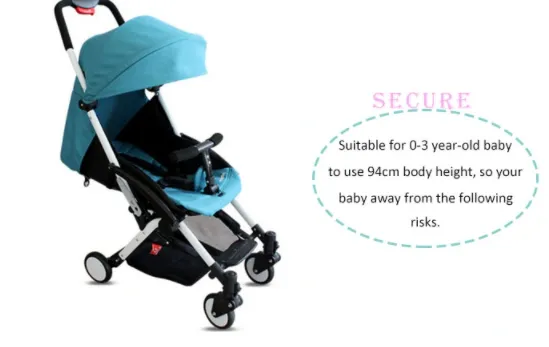
- Afrikaans
- Albanian
- Amharic
- Arabic
- Armenian
- Azerbaijani
- Basque
- Belarusian
- Bengali
- Bosnian
- Bulgarian
- Catalan
- Cebuano
- Corsican
- Croatian
- Czech
- Danish
- Dutch
- English
- Esperanto
- Estonian
- Finnish
- French
- Frisian
- Galician
- Georgian
- German
- Greek
- Gujarati
- Haitian Creole
- hausa
- hawaiian
- Hebrew
- Hindi
- Miao
- Hungarian
- Icelandic
- igbo
- Indonesian
- irish
- Italian
- Japanese
- Javanese
- Kannada
- kazakh
- Khmer
- Rwandese
- Korean
- Kurdish
- Kyrgyz
- Lao
- Latin
- Latvian
- Lithuanian
- Luxembourgish
- Macedonian
- Malgashi
- Malay
- Malayalam
- Maltese
- Maori
- Marathi
- Mongolian
- Myanmar
- Nepali
- Norwegian
- Norwegian
- Occitan
- Pashto
- Persian
- Polish
- Portuguese
- Punjabi
- Romanian
- Russian
- Samoan
- Scottish Gaelic
- Serbian
- Sesotho
- Shona
- Sindhi
- Sinhala
- Slovak
- Slovenian
- Somali
- Spanish
- Sundanese
- Swahili
- Swedish
- Tagalog
- Tajik
- Tamil
- Tatar
- Telugu
- Thai
- Turkish
- Turkmen
- Ukrainian
- Urdu
- Uighur
- Uzbek
- Vietnamese
- Welsh
- Bantu
- Yiddish
- Yoruba
- Zulu
Dec . 12, 2024 16:32 Back to list
How to Fine-Tune Your Mountain Bike's Gear Shifter for Optimal Performance
Adjusting the Shifter on Your Mountain Bike
Mountain biking is one of the most exhilarating outdoor activities anyone can partake in, but to truly enjoy the ride, maintaining your bike in optimal condition is essential. One of the critical aspects of bike maintenance is ensuring that the shifters are properly adjusted. A well-tuned shifter enhances performance, provides a smoother ride, and can prevent wear on your bike’s drivetrain. Here’s a guide to help you adjust the shifters on your mountain bike effectively.
Understanding Shifter Mechanics
Before diving into adjustments, it’s important to understand how shifters work. The shifter is responsible for moving the chain between different gears on the cassette. There are two types of shifters trigger shifters, which can be operated using your fingers, and grip shifters, which are turned by rotating the handlebar grip. Regardless of the type, the objective remains the same—smooth and precise shifting between gears.
Tools You’ll Need
To adjust your mountain bike shifter, you’ll need a few basic tools
- A Phillips head screwdriver - A hex key set - Some bike lubricant - A derailleur adjustment tool (optional)
Steps for Adjusting Your Shifter
1. Inspect Your Current Setup Before making any adjustments, inspect the current condition of your shifter and derailleur. Ensure there are no loose cables, frayed wires, or visible damage. Check that the chain is clean and well-lubricated.
2. Check Cable Tension Start by checking cable tension. Shift into the largest chainring and largest sprocket. The derailleur should be in a straight line with the sprocket. If it isn’t, you likely need to adjust the cable tension.
adjusting shifter on mountain bike

- To adjust, locate the barrel adjuster on the shifter or on the derailleur. Turning the barrel counterclockwise increases tension, while clockwise decreases it. Make small adjustments and test the shifts after each change.
3. Limit Screws Adjustment Next, adjust the limit screws. These screws determine how far the derailleur can move towards the outer and inner gears, preventing the chain from falling off.
- For the high limit (smallest cog), shift to the smallest chainring and the largest cog. Locate the high limit screw on the derailleur and adjust until the derailleur just clears the largest cog. Repeat this with the low limit (largest cog) to ensure the derailleur doesn’t overshift and cause chain derailment.
4. Fine-Tuning Once you’ve made these adjustments, shift through your gears several times to ensure that the changes have made a positive impact. If you experience any skipping or uncertainty in gear changes, return to the barrel adjuster to make more fine-tuning adjustments.
5. Lubricate the Cables Smoother shifting also relies on well-maintained cables. Apply a light layer of lubricant to the cables to reduce friction and enhance performance. Wipe away any excess to avoid attracting dirt.
Testing Your Shifts
After adjustments, take your bike for a test ride. Shift through all gears under load, such as while climbing or accelerating, to ensure everything feels smooth and responsive. Make any additional adjustments as needed until you feel satisfied with the performance.
Conclusion
Regular maintenance and proper adjustment of your mountain bike shifters can greatly enhance your riding experience. By following these steps, you’ll not only ensure that your gears shift seamlessly but also prolong the life of your bike’s drivetrain components. Happy riding!
-
The Ultimate Kids' Four-Wheeler Experience
NewsJul.09,2025
-
The Ultimate Guide to Mountain Bikes: Gear Up for Your Ride
NewsJul.09,2025
-
The New Age of Cycling: Electric Bikes for Every Rider
NewsJul.09,2025
-
The Best Kids Bicycles: Ride in Style and Safety
NewsJul.09,2025
-
The Best 3-Wheel Scooters for Kids: Fun, Safety, and Adventure
NewsJul.09,2025
-
Revolutionize Your Ride: Affordable Electric Bikes
NewsJul.09,2025
-
Finding the Perfect Mountain Bike for Every Rider
NewsJul.09,2025



